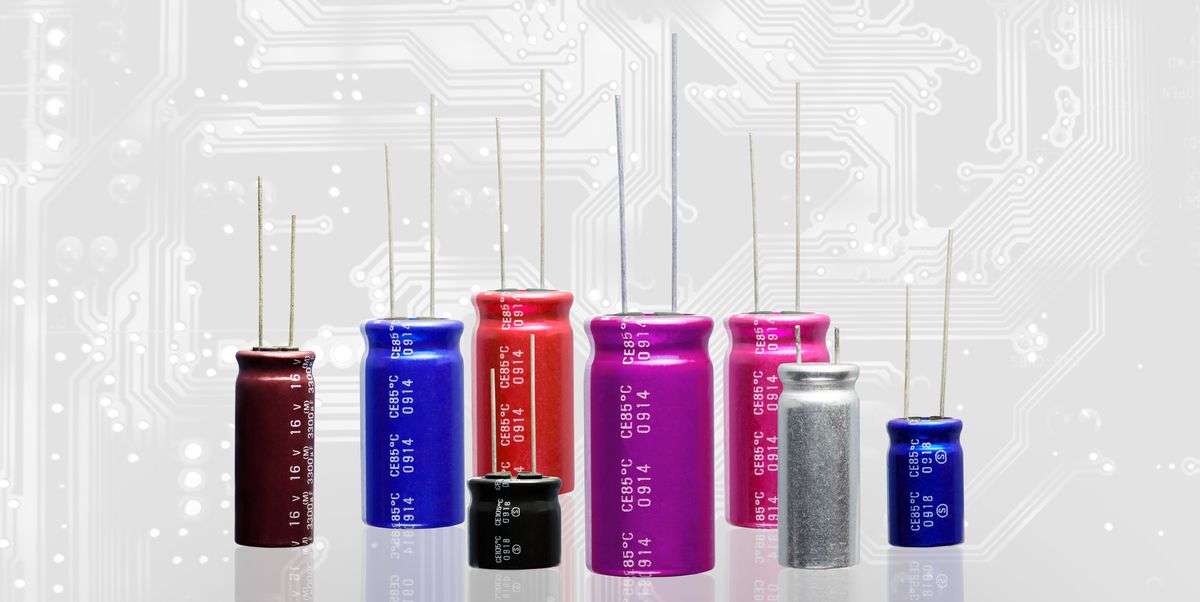Material science has just been crushing it for a good long minute now.
There are materials possible that will completely change the world.
Theres probably a room temperature superconductor for example.
The number of possibilities is effectively infinite though, since its not just which atoms, but also how they’re arranged.
Theres probably a room temperature superconductor for example.
I thought that one was a no go? Did I miss more news?
As in, one probably exists but has not been discovered yet. Every year scientists get them running closer and closer to room temperature
Even just getting above the boiling temp of liquid nitrogen is a really big deal. Liquid helium is something we will eventually run out of and is largely dependent on fossil fuel extraction to be collected. Helium can’t be recaptured after it escapes an open loop cooling system.
LN2 is so much cheaper to run and it’s sustainable. We’ll never run out of Nitrogen so long as there’s power to cool it. LN2 is cheaper than craft beer.
I wonder if progress will be slow and steady until we finally get there or if it will be a huge jump past the finish line like there was in the 80s. Either way, I don’t expect to see practical applications outside of the lab in my lifetime…but it’s really fun to watch the science advanced, even if it is all over my head
You are right, however, it’s worth noting most of these materials are highly complex and contain exotic elements. Basically these compounds are not suitable for any real life application in long range energy transfer
I think they mean hypothetically.
There was one team fairly recently that thought they had developed one that got a lot of press, but it turned out to not be true.
But that was only for that one specific case, it didn’t prove that room temperature superconductors can’t exist in general, there are still other teams working on developing them, and theoretically they could be possible, we just haven’t quite worked out what materials will exhibit superconductivity at room temperature, under what circumstances, and how to make them.
And we have some materials that come pretty damn close, Lanthanum decahydride can exhibit superconductivity at temperatures just a few degrees colder than some home freezers can manage (although at very high pressures)
That’s why we name our ages after the materials within. Material science is the foundation for almost all other physical sciences.
How do you account for Space age and Information age?
We’re currently in the information age, which is due to silicon. In a few hundred years, this time may reasonably be called the silicon age. Society has only recently transferred to the silicon age from the previous iron age. If we don’t cause a total collapse of our society, then we will be in the silicon age for a few hundred more years, and that will likely include space colonization.
The space age you’re referring to is likely the 60s, when space exploration was beginning. A decade or two isn’t long enough to be considered an age.
the information age is easy: the silicon age!
not sure about the space age…maybe titanium age? that’s about the time we figured out how to machine titanium on large scales, and for highly specialized, extreme applications (talking about the SR-71 here, mostly). could also call it the alloy age, since a number of important alloys were discovered around that time
I thought it was atomic age and information age…
Or was that just empire earth…
There’s the industrial age too. Which I guess you could also call “The Age of Steam” or “The Age of Coal” or some other thing.
deleted by creator
There have been constant news articles coming out over the past few years claiming the next big thing in supercapacitor and battery technologies. Very few actually turn out to work practically.
The most exciting things to happen in the last few years (from an average citizen’s perspective) are the wider availability of sodium ion batteries (I believe some power tools ship with them now?), the continued testing of liquid flow batteries (endless trials starting with the claim that they might be more economic) and the reduction in costs of lithium-ion solid state batteries (probably due to the economics of electric car demand).
FWIW the distinction between capacitors and batteries gets blurred in the supercapacitor realm. Many of the items sold or researched are blends of chemical (“battery”) and electrostatic (“capacitor”) energy storage. The headline of this particular pushes the misconception that these concepts can’t mix.
My university login no longer works so I can’t get a copy of the paper itself :( But from the abstract it looks first stage, far from getting excited about:
This precise control over relaxation time holds promise for a wide array of applications and has the potential to accelerate the development of highly efficient energy storage systems.
“holds promise” and “has the potential” are not miscible with “May Be the Beginning of the End for Batteries”.
I’ve been seeing a lot about Sodium-ion just in the past week.
While they seem to have a huge advantage in being able to charge and discharge at some fairly eye-watering rates, the miserable energy density would seem to limit them to stationary applications, at least for now.
Perfect for backup power, load shifting, and other power-grid-tied applications though.
There are already cars with this technology (one of the cheap Chinese ones)
They’ve also got much better lifespans, being able to cycle many more times with less capacity loss. As they currently stand, they’re much better choices for stationary storage applications. However, I have seen them implemented in power tools and cars for their discharge rates, but it doesn’t hurt that they will stay healthy for longer.
I thought one of the main advantages of sodium-ion batteries was price? Great for the applications you listed
And environmentally way better than Li-Ion.
I’m doing research on high energy density Na-ion batteries. We’ll get there eventually
I mean, I wouldn’t mind a car with “only” 200km range, but that can charge up to full in just 5 minutes. I use my car just for work 99% of the time anyway, the times I need to go somewhere further away I can easily stop midway to charge, get a coffee in the meantime and then be on my way.
Unfortunately what’s shipping today seems it would offer maybe half that.
For the batteries that were announced this past week, a larger-than-refrigerator-sized cabinet held a capacity of around 15kWh.
Around half the energy density by mass of Lithium batteries, and in the order of a sixth of the density by volume.
Now if only we could come up with a system where your car could be charged while stopped at traffic lights, we might be onto a winner (:
Considering however that the price of sodium is around 1-2% that of lithium, I expect we will see significant R&D and those numbers quickly start to improve.
|My university login no longer works so I can’t get a copy of the paper itself :(
Scihub my brother 🙏
Sadly Sci-Hub has not received updated articles in several years. Alexandra is waiting for the outcome of the trial in India. I don’t think it depends on what the outcome is, just that the trial needs to be over.
Just email one of the researchers and ask them to send you a copy
We have the internet man, just bug another human and wait a few days to hear back from them.
Like I know that’s what you are “supposed” to do. But public money public knowledge, I refuse to accept that this is somehow an acceptable state of things.
I wouldn’t know, but it’s totally not on there, or so I’ve been told.
Are these papers not listed on arxiv?
There have been constant news articles coming out over the past few years claiming the next big thing in supercapacitor and battery technologies.
More like decades. Anyone remembers buckyballs and buckytubes? What happened to that?
Nanotubes are still a thing, but most of the hype now seems to be around ‘buckysheets’ (graphene)
There’s an old saying: “Graphene is so versatile it can do anything except leave the laboratory”.
To paraphrase one of society’s less brilliant thinkers, “Who would have thought
heathcareadvanced materials science could be so hard?”
I heard that nanotubes are being used in strengthening various materials. But yeah, not world-changing
Yup. How long have we been waiting for graphene batteries to revolutionize technology? About a decade now?
…and the same obstacle that faced graphene a decade ago is the same seemingly insurmountable obstacle facing it today.
The article is listed on ResearchGate.
For anyone looking for an alternative to Sci-Hub (the GOAT), you can make a free account on RG and send a request to the authors for a copy of their paper (about two clicks to perform).
Most researchers will send you a copy within a day, maybe two. If you copy the title or the DOI link into a search with “ResearchGate” it usually shows up in most search engines.
Serious question: How is this different than all the other sensationalized headlines about some technology that’s gonna change everything, and then you later hear nothing about it?
This one features the number 19.
So specific.
It’s just two years away!!
So it will get here with fusion, flying cars, hydrogen cars, and jetpacks?
They are all calling for investors just to figure out it doesn’t scale.
That’s my assumption at least
I had a little discussion with a guy complaining about sodium batteries and how you keep hearing these wild claims and then nothing. I did a quick search and saw an article about a $2 billion partnership agreement to work on a pilot plant for sodium batteries. He claimed it was yet another sensational headline and doubted anything would happen from it. Less than a week later I saw an article about a plant in America being announced.
This stuff is hard. It’s not like Master of Orion where you throw money at a specific research and get access upon completion. Different groups around the world are researching a multitude of different ideas, some related, and after a while a bunch of these ideas are combined and associated and researched, and all of a sudden you have a new product that’s significantly different from what was available before. And then you see incremental improvements for decades, not unlike the internal combustion engine or rechargeable lithium batteries.
It’s the same with many infrastructure problems. You hear about some interesting infrastructure project that’s going to transform regional travel, improve transit, make biking/walking safer, or prepare for future natural disasters. Then it takes forever for them to go into place because it takes a long time to plan, do the legal work, and build. But then the infrastructure goes into place and no one thinks twice about the long process behind it.
And we should also consider the longevity of these infrastructures. Cities that built their subways in the 19th century are still running them today and are vastly superior in terms of transit abilities than car cities. The population densities of today are unimaginable without central sewers and water infrastructure. Having continent spanning electricity grids are gigantic achievements. All these have shaped our lives for decades and sometimes centuries already and they are set to do so for centuries to come.
Then it takes forever for them to go into place b
I have an item that costs me 40 to buy. I sell you the item for 200. I get a hundred now and a hundred when you get the item. If I fill the order now I get my 100. However if I wait a year I get an interest free loan on the 40 bucks. Maybe I push you off for 10 years. I not only get the 100 you owe me I also doubled that 40. If I am a big company I can pull this off, if I am a one man operation I can’t. Guess who gets hired for these projects. Hint it isnt Jeff’s gutter repair.
And that is just fixed priced contracts. You can imagine the horrorshow of open ended ones.
Sodium batteries look great. They also can use the same manufacturing equipment as lithium batteries. Reducing the capital costs for the product.
You are reading about it in Popular Mechanics, so it’s definitely a sensationalized headline, we know that at a minimum.
Although we don’t see it, all of these developments do actually eventually make their way into battery tech. The batteries of today are not the batteries of 2014.
If you remember what battery powertools were like in early 2010s, it’s super obvious how far we’ve come. The higher end things like battery powered lawn mowers didn’t exist, and if you wanted real power, you needed a cord.
I just wish it was an either/or situation.
I don’t always need my lawn mower/blower/weed trimmer on batteries. I wish I could easily plug them in when doing light dut work close to the house. But then they couldn’t tie me into their battery ecosystem as easily.
I’ve seen a Makita eletric brush cutter with an adapter to plug straight into a standard outlet. The person who bought the machine told me it was more expensive than a battery pack but at least it made the machine usable for longer periods of time when energy is available.
I still remember that in the 90s till the 2000s you would get maybe 60 to 90 minutes of battery life out of a new laptop. Then it jumped to 4 or more hours thanks to better batteries, more energy efficient CPUs and displays.
Laptops is a bad example. The improvements are moreso the chips and efficient hardware, not the battery
Cord mowing has a long established tradition.
I mowed my grass with a corded mower for a decade until the motor bearing finally disintegrated. Cost me $100 and one blade replacement. No small gas engine was ever that reliable for me
Did you ever mow your power cord though?
Nah, just zig zag away from where you plugged it in and it’s never a problem.
I mentally nicknamed them the twins. Two guys who worked together with their two drills. Each had a double sized DeWalt battery and another spare double sized. Last time I saw them was 2016. So yeah you got an acedotal backing you up.
It’s not what the article says. Still interesting application of mixed 2D/3D technologies. Always hopeful that these energy developments leave the lab though.
Ha, exactly. We’ve seen the “start of the end” of batteries for decades now.
It’s only a few years away!
I remember reading about this in a textbook back in uni. Might as well have been in the telegraph era
Headline is dumb. If capacitors are better at being batteries than batteries are, they just become the next generation of batteries.
But capacitors aren’t batteries. Batteries store chemical energy. Capacitors store electrical potential energy. Electronically they behave much differently.
Yes they do… including not holding a charge when the differential drops too far.
The real wins are in battery-backed capacitors. Charge the caps fast, then let them keep the batteries topped up.
That’s what I do being off-grid. I have my battery bank then a series of Supercaps to essentially act as an on/off ramp//drawbridge and temper quick demands. Kinda like an inverse soft starter so this is suuuuper interesting to me.
Do you have a link to a guide on his to set this up?
Only for certain types of capacitors. In practice they can overlap quite a bit, especially with common aluminium electrolytic capacitors (these form & dissolve complex aluminium oxide & hydroxide layers on the plates).
Headline is not dumb. There are reasons to make a distinction between the two, the most salient one being that capacitors are several orders of magnitude faster to charge and discharge.
Capacitors can theoretically charge MUCH faster.
However the galvanic potential of lithium is as large as is practically possible. The galvanic potential is what really matters for a battery. Capacitors are nowhere near the joules per weight/volume.
I wonder why I even read these articles. If these do turn out to be useful it will eventually make its way into technologies I use or buy near me. I don’t have to hunt them out.
I mean the application isn’t exactly arduous but they use capacitors in solar powered watches instead of batteries. They claim you can still get 80% of max voltage after 20 years use.
Electrolytic capacitors are closer to batteries than to non-polarized capacitors. Lithium-ion cells in capacitor housings also exist, presumably to evade tariffs and restrictions involved in shipping batteries.

Electrolytic capacitors use the chemistry to make a very high dielectric allowing the plates to get very close and increase the capacitance and decrease the size.
A cell in a battery is a capacitor then converts the charge on the plates into chemical energy and vice versa allowing much more energy storage and a flat operating range as the plates charge is replenished by the chemical reaction.
This article doesn’t go into details but it sounds like the breakthrough is a much better dialectic then storing energy in a chemical reaction.
Good comment, but check your uses of “then”.
Yeah should have that. Mornings are hard.
They’re more of a hybrid technology. They have some great applications.
Like temporary storage when using regen from a car. They can buffer the energy and help with a rapid acceleration.
Dash cam in a car. They can charge the cap and in the event in a malfunction / event. The camera can continue to record.
Solar lamps. Charge during the day. Release energy during the night.
They’re poor at long term storage. Great at fast and temp storage.
Upvoted because this is true. I knew that information so I can confirm it. I swear I did.
This somehow makes me less trusting of the previous comment.
There are no absolute numbers in here. How much charge can it hold? How does that compare to an AAA battery? How long can it hold the charge and how does it compare? What dimensions would it need to have to store as much as a AAA battery? What’s the current projected price?
I wonder if we will get to a point where capacitor batteries will be too good.
Can you image a small issue leading to an entire instantaneous energy dump of a large capacity capacitor while on an airplane?
Make me wonder if we will limit how fast a capacitor can discharge in some consumer goods.
We already do with resistors.
And fuses and breakers
Yeah. Good thing we don’t fill up planes with flammable material today!
/s
I think we have more pressing issues in certain airplanes at the moment, but that’s a good point.
Can’t blow up the plane if it falls apart first
I can’t wait to see this technology in motorcycles and micro mobility vehicles. It will be a mushroom in Mario Kart IRL. And imagine this tech on drag bikes/cars
I wanna see some even more insane FPV drones. theres always some battery breakthrough though, so I don’t wanna get my hopes up.
Unfortunately the technology will also be used for creating new weapons of war.
Boom?
Shakalaka
…when the walls fell.
I took it more of an Apache Indian thing.
Close enough lol
Hell yeah that’s freaking awesome
I hope to see these become popular someday and with that kind of increase they’re likely to get a shit ton of funding
I really hope it leads to something no energy loss for regen would be GOAT





















